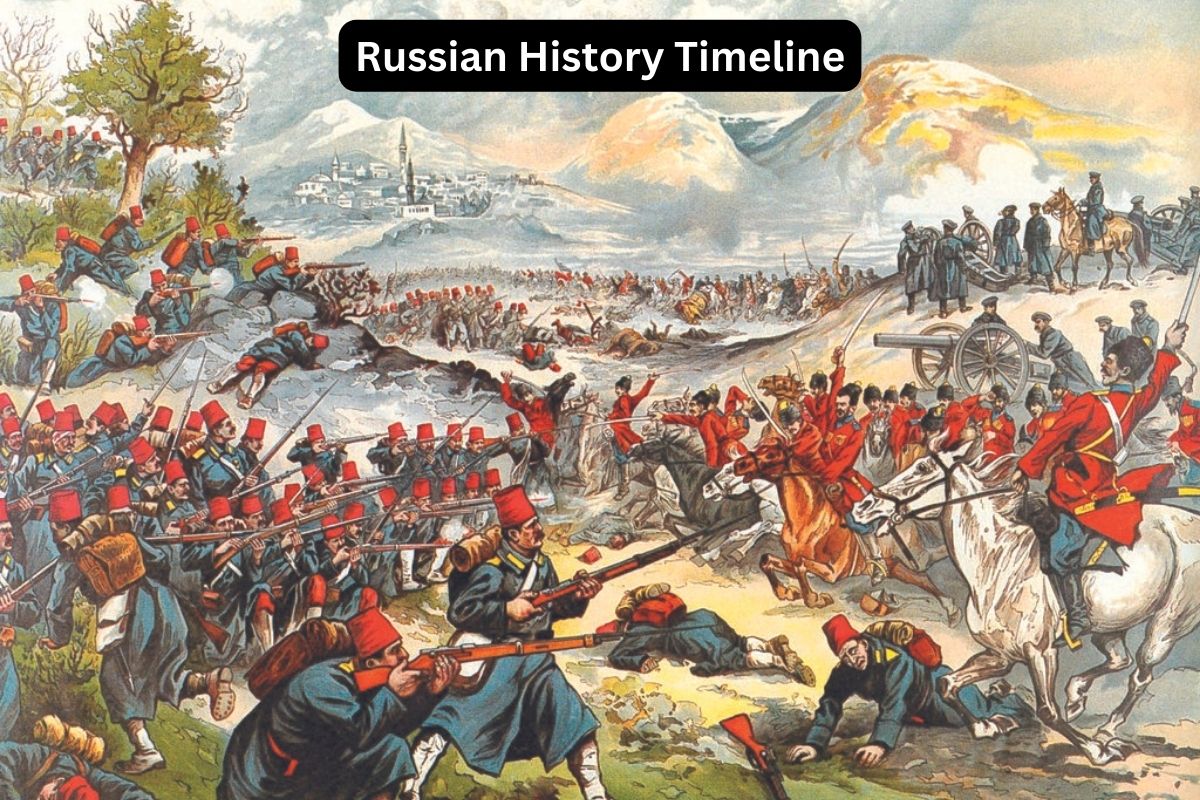Russia’s history is a tapestry woven with threads of conquest, cultural exchange, and political upheaval. From the early days of the East Slavic tribes to the modern era under Vladimir Putin’s leadership, the country has experienced dramatic transformations that have shaped its identity and trajectory on the world stage.
This article provides a comprehensive overview of key moments and turning points in Russian history, tracing its evolution from the medieval state of Kievan Rus’ to the challenges and opportunities of the contemporary era.
Join us on a journey through the corridors of time as we explore the rich tapestry of Russian history and uncover the forces that have shaped one of the world’s most enigmatic nations.
| Century/Period | Key Events |
|---|---|
| 9th Century | Formation of East Slavic tribes; emergence of Kievan Rus’ |
| 988 | Conversion to Christianity under Grand Prince Vladimir I |
| 13th Century | Mongol Invasion; establishment of the Golden Horde |
| 14th-15th Centuries | Rise of Moscow |
| 16th Century | Ivan the Terrible’s reign; Moscow becomes the capital |
| 17th Century | Time of Troubles; establishment of the Romanov dynasty |
| 18th Century | Peter the Great’s reign; foundation of St. Petersburg |
| 19th Century | Napoleonic Wars; Emancipation of the Serfs |
| Early 20th Century | Russian Revolution; Soviet Era begins |
| 1917-1921 | Russian Civil War |
| 1922 | Formation of the Soviet Union |
| 1930s-1950s | Stalin Era; World War II |
| 1956-1991 | Cold War Era |
| 1991 | Dissolution of the Soviet Union |
| 1990s-2000s | Transition Period in Russia |
| 21st Century | Putin Era; Modern Russia |
Timeline of Russian History
9th Century: Formation of East Slavic tribes; emergence of Kievan Rus
In the 9th century, various East Slavic tribes inhabited the region known today as Russia. Over time, these tribes began to coalesce, forming a loose federation known as Kievan Rus’.
Also Read: Historical Facts About Russia
The establishment of Kievan Rus’ is traditionally attributed to Scandinavian Vikings, led by Rurik, who settled in the region. This federation laid the groundwork for the future state of Russia and played a crucial role in the region’s political and cultural development.
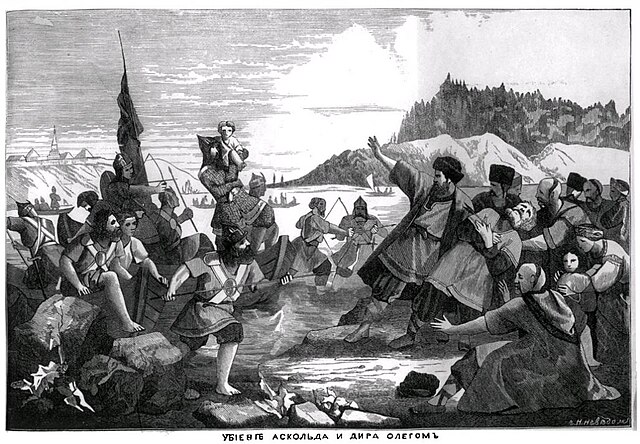
988: Conversion to Christianity under Grand Prince Vladimir I
Grand Prince Vladimir I of Kiev, also known as Vladimir the Great, played a pivotal role in the Christianization of Kievan Rus’.
In 988, Vladimir converted to Christianity and initiated the mass baptism of his subjects in the Dnieper River. This event marked the beginning of the spread of Orthodox Christianity in the region and had profound implications for Russian culture, politics, and religion.
13th Century: Mongol Invasion; establishment of the Golden Horde
In the 13th century, the Mongol Empire, under the leadership of Genghis Khan and his successors, launched a series of devastating invasions into Eurasia. In 1237-1240, the Mongols invaded Kievan Rus’, sacking major cities such as Kiev, Vladimir, and Novgorod.
Also Read: Ivan the Great Facts
The invasion culminated in the Battle of the Sit River in 1238, where the Mongols decisively defeated a coalition of Russian princes.
Following the conquest, the Mongols established the Golden Horde, a Mongol khanate that ruled over the Russian lands for several centuries, shaping the political and social landscape of the region.
14th-15th Centuries: Rise of Moscow
In the aftermath of the Mongol invasion and the subsequent fragmentation of Kievan Rus’, the principality of Moscow emerged as a dominant power in the region.
Under the leadership of Grand Prince Ivan I Kalita and his successors, Moscow gradually expanded its territory and influence, often at the expense of neighboring principalities.
By the end of the 15th century, Moscow had established itself as the preeminent political and cultural center of Russia, laying the foundation for the future Russian state.
16th Century: Ivan the Terrible’s reign; Moscow becomes the capital
Ivan IV, also known as Ivan the Terrible, ascended to the throne in 1547, becoming the first Tsar of Russia. His reign was marked by efforts to centralize power and expand the Russian state.
Ivan implemented administrative reforms, including the establishment of a bureaucracy known as the oprichnina, which aimed to consolidate his authority and suppress opposition.
Despite his achievements in expanding Russia’s territory, Ivan’s rule was also characterized by cruelty, including the oprichnina’s ruthless repression and the execution of nobles.
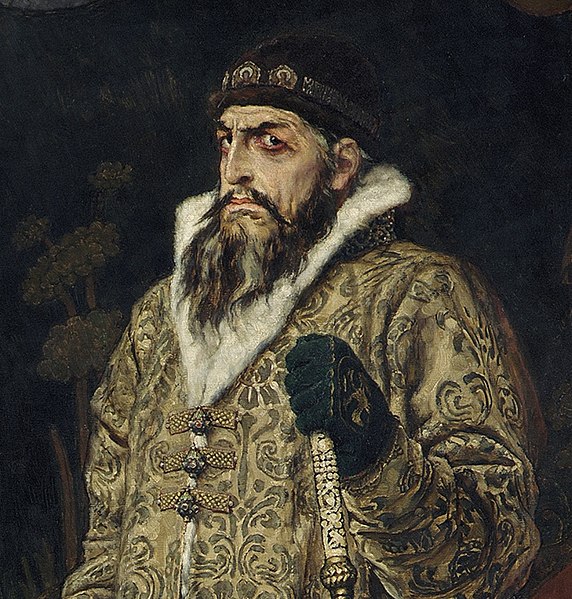
17th Century: Time of Troubles; establishment of the Romanov dynasty
The early 17th century was a period of political and social upheaval known as the Time of Troubles. Following the death of Ivan the Terrible’s last heir in 1598, Russia plunged into a state of chaos, marked by famine, foreign invasion, and internal strife.
This period saw the emergence of competing factions vying for control of the throne, including the False Dmitris and other pretenders. In 1613, the crisis ended with the ascension of Michael Romanov to the throne, establishing the Romanov dynasty, which would rule Russia for over three centuries.
18th Century: Peter the Great’s reign; foundation of St. Petersburg
Tsar Peter the Great, who ruled from 1682 to 1725, is often credited with modernizing and westernizing Russia.
Inspired by his travels in Western Europe, Peter implemented sweeping reforms aimed at modernizing the Russian state and military. He established a new capital, St. Petersburg, on the Baltic Sea, symbolizing Russia’s shift toward Europe.
Peter also enacted social reforms, such as the Table of Ranks, which allowed commoners to rise through the ranks of the nobility based on merit. His reign marked a turning point in Russian history, laying the foundation for Russia’s emergence as a major European power.
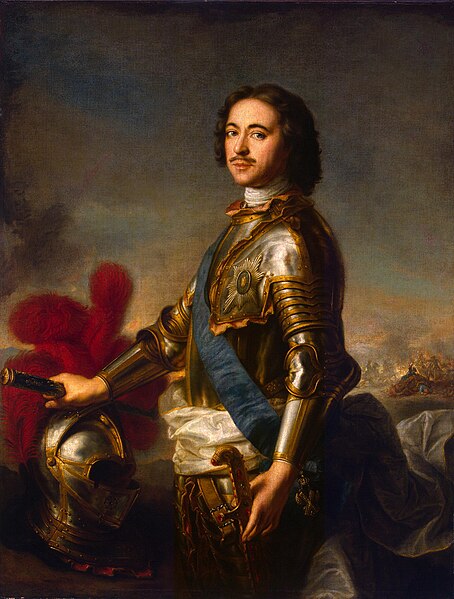
19th Century: Napoleonic Wars; Emancipation of the Serfs
The 19th century was a period of significant transformation for Russia. The country played a central role in the Napoleonic Wars, culminating in Napoleon’s disastrous invasion of Russia in 1812. Despite initial setbacks, Russia emerged victorious, contributing to the defeat of Napoleon and the restoration of European stability.
The 19th century also witnessed the beginning of industrialization in Russia, spurred by economic reforms and technological advancements. However, industrialization was accompanied by social and political challenges, including growing discontent among the peasantry and emerging revolutionary movements.
In 1861, Tsar Alexander II issued the Emancipation Edict, which freed the serfs in Russia. This historic decree aimed to address the growing social unrest and economic inefficiencies associated with serfdom.
While the emancipation granted freedom to millions of serfs, it also imposed significant limitations and obligations, such as redemption payments to landlords for land allotments.
The emancipation marked a crucial step toward modernizing Russian society and economy, but it also triggered complex social and economic changes, including the rise of a new class of rural landowners and ongoing struggles for land and labor rights.
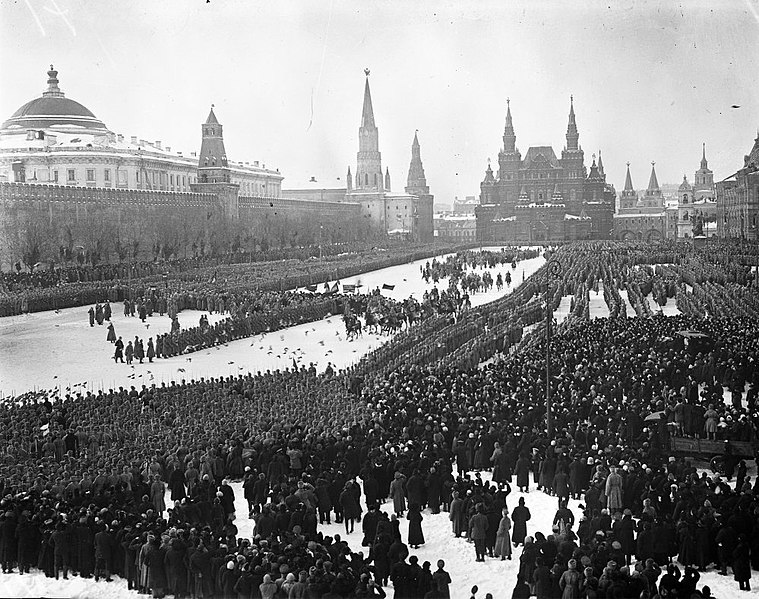
Early 20th Century: Russian Revolution; Soviet Era begins
The early 20th century witnessed profound political upheaval in Russia, culminating in the Russian Revolution of 1917. The revolution resulted in the overthrow of the Tsarist regime and the establishment of a provisional government followed by the Bolshevik seizure of power led by Vladimir Lenin.
The Bolsheviks, representing the radical faction of the Russian Social Democratic Labor Party, advocated for Marxist ideology and aimed to establish a socialist state.
The revolution ultimately led to the creation of the Soviet Union and the beginning of the Soviet era, characterized by communist rule, centralized planning, and state control over the economy and society.
1917-1921: Russian Civil War
The Russian Civil War, which lasted from 1917 to 1921, was a conflict fought between various factions competing for control of Russia following the Bolshevik Revolution.
The war pitted the Bolshevik Red Army against a diverse array of opposing forces, including anti-Bolshevik “White” armies, foreign interventionists, and nationalist movements seeking independence from the new Soviet regime.
The war was marked by brutal fighting, widespread violence, and devastation across Russia. The Bolsheviks ultimately emerged victorious, consolidating their control over the country and establishing the Soviet Union as a one-party socialist state.
1922: Formation of the Soviet Union
In 1922, the Soviet Union was officially established, bringing together multiple Soviet republics, including Russia, Ukraine, Belarus, and others, into a single federal entity.
The formation of the Soviet Union marked a significant milestone in the consolidation of Bolshevik power and the implementation of socialist policies across the vast territories of the former Russian Empire.
Under the leadership of Vladimir Lenin and later Joseph Stalin, the Soviet Union embarked on ambitious programs of industrialization, collectivization, and social engineering, fundamentally reshaping Russian society and geopolitics for decades to come.
1930s-1950s: Stalin Era; World War II
The Stalin era, which spanned from the 1930s to the 1950s, was a period of profound transformation and upheaval in the Soviet Union. Under the leadership of Joseph Stalin, the Soviet regime pursued rapid industrialization, collectivization of agriculture, and centralized planning through Five-Year Plans.
However, these policies were accompanied by widespread repression, political purges, and human rights abuses, resulting in millions of deaths and immense suffering among the Soviet population. The Stalinist regime also implemented a cult of personality around Stalin, emphasizing his role as the infallible leader of the Soviet state.
Additionally, the Stalin era coincided with World War II, during which the Soviet Union played a crucial role in the defeat of Nazi Germany. The Soviet Union suffered immense human and material losses, particularly during the initial stages of the war, but eventually emerged victorious after key battles such as the Battle of Stalingrad and the Siege of Leningrad.
The war had a profound impact on Soviet society and solidified the Soviet Union’s status as a superpower in the post-war world.
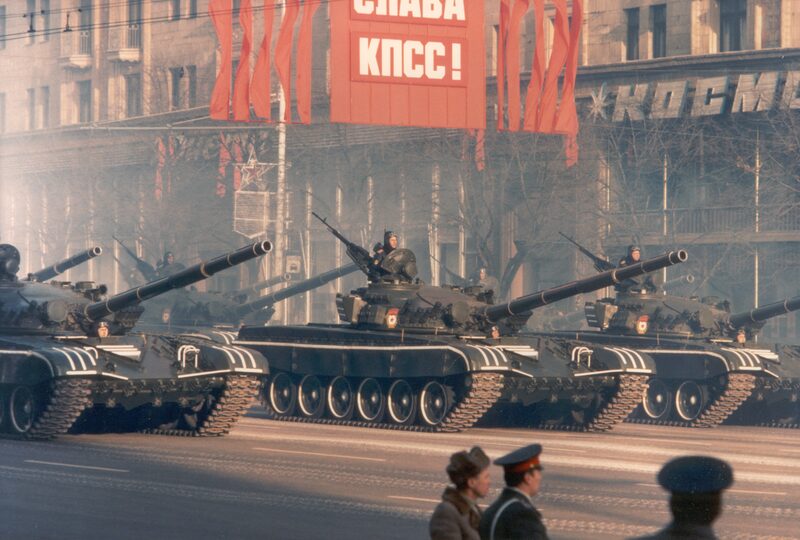
1956-1991: Cold War Era
The period from 1956 to 1991 was dominated by the Cold War between the Soviet Union and the United States, characterized by ideological rivalry, geopolitical competition, and nuclear brinkmanship.
The Cold War era saw the Soviet Union and the United States engaging in proxy conflicts and competition for influence across the globe, including in Eastern Europe, Asia, Africa, and Latin America. The Soviet Union maintained a vast military and political apparatus to assert its influence over its satellite states and to counter the perceived threat posed by the capitalist West.
However, the Soviet economy struggled to keep pace with the technological advancements and economic growth of Western nations, leading to stagnation and internal discontent within the Soviet Union.
1991: Dissolution of the Soviet Union
In 1991, the Soviet Union collapsed following a period of political turmoil, economic crisis, and nationalist unrest. The dissolution of the Soviet Union was precipitated by a series of events, including the rise of reformist movements within the Soviet republics, growing calls for independence, and the failed coup attempt by hardline elements of the Communist Party in August 1991.
On December 25, 1991, Soviet President Mikhail Gorbachev resigned, and the Soviet flag was lowered for the last time over the Kremlin, marking the official end of the Soviet Union.
The dissolution of the Soviet Union resulted in the emergence of independent states, including the Russian Federation, which inherited the Soviet Union’s status as a nuclear superpower and faced the challenges of building a new political and economic system.
1990s-2000s: Transition Period in Russia
The 1990s and 2000s were a period of significant transition and upheaval in Russia as the country grappled with the legacy of the Soviet era and the challenges of building a market-based economy and democratic political system.
The collapse of the Soviet Union led to economic dislocation, social unrest, and widespread poverty as Russia transitioned from a centrally planned economy to a market-oriented one.
The period was marked by political instability, with President Boris Yeltsin facing opposition from both reformist and conservative factions. Yeltsin’s government implemented controversial economic reforms, including privatization and liberalization, but also struggled with corruption, crony capitalism, and social inequality.
The 2000s saw the rise of Vladimir Putin to power, initially as president and later as prime minister, ushering in a period of stability and assertive leadership characterized by economic growth, political consolidation, and increasing tensions with the West.
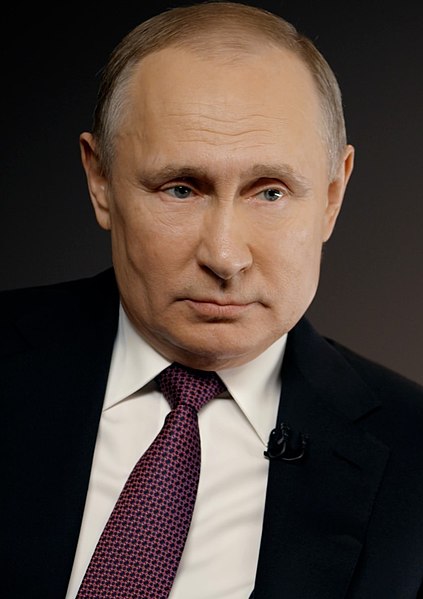
21st Century: Putin Era; Modern Russia
The 21st century in Russia has been largely characterized by the continued dominance of Vladimir Putin in Russian politics. Putin first assumed the presidency in 2000 and has since served multiple terms as both president and prime minister.
His tenure has been marked by a mix of economic stability, political consolidation, and assertive foreign policy. Under Putin’s leadership, Russia has sought to reassert itself as a major player on the global stage, often adopting a confrontational stance towards the West, particularly in response to NATO expansion and Western support for pro-democracy movements in former Soviet states.
Domestically, Putin has overseen the centralization of power, crackdowns on political opposition and independent media, and the promotion of conservative social values. Russia’s economy has been heavily dependent on oil and gas exports, making it vulnerable to fluctuations in global energy markets.
Despite facing criticism for human rights abuses and allegations of election rigging, Putin remains popular among many Russians, who see him as a symbol of stability and national pride.
February 2022: War With Ukraine
The conflict between Russia and Ukraine has been ongoing since 2014, with significant escalations occurring in 2022. Below is a brief overview of the key events:
2014: The conflict began in the aftermath of the Ukrainian Revolution, which saw the removal of pro-Russian President Viktor Yanukovych. Russia subsequently annexed Crimea after a disputed referendum. This move was widely condemned by the international community.
In Eastern Ukraine, pro-Russian separatists in the Donetsk and Luhansk regions declared independence, leading to the start of the conflict known as the War in Donbas.
February 2015: The Minsk II agreement was signed in an effort to halt the fighting in Eastern Ukraine, but the ceasefire was frequently violated, and the conflict persisted.
2018: Tensions flared in the Kerch Strait when Russia seized three Ukrainian naval vessels and detained their crew members.
2021: Throughout the year, there were reports of increased Russian military activity near Ukraine’s borders, raising concerns about a potential escalation.
February 2022: Russia officially recognized the independence of the self-proclaimed Donetsk People’s Republic and Luhansk People’s Republic. Shortly after, on February 24, 2022, Russia launched a full-scale invasion of Ukraine, attacking from multiple directions and targeting cities across the country.
March 2022: The Russian military faced stiff resistance from Ukrainian forces. Millions of Ukrainian civilians fled the country or were internally displaced. The international community responded with widespread condemnation of Russia’s actions, imposing severe economic sanctions on Russia.
April 2022: Russian forces failed to capture the capital, Kyiv, and subsequently redirected their efforts to fully control the Donbas region and the southern part of Ukraine.
May 2022 and onwards: The war has seen a protracted conflict, particularly in the eastern and southern parts of Ukraine, with significant casualties on both sides and extensive damage to civilian infrastructure. The global community has been actively involved in diplomatic efforts and providing humanitarian and military aid to Ukraine, while Russia has faced increasing international isolation.
